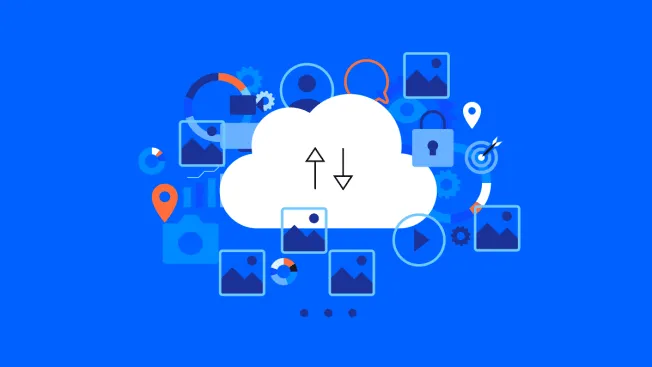"Cloud Storage vs. Traditional Storage: Which One Fits Your Data Needs?"
 Ayan
Ayan
In the digital age, the choice of data storage method is crucial for individuals and organizations alike. The two primary options available are cloud storage and traditional data storage. While both serve the same fundamental purpose—storing and retrieving data—they differ significantly in terms of implementation, accessibility, security, and scalability. This article delves into the key differences between cloud storage and traditional data storage to help users make informed decisions about which option is best suited for their needs.
1. Definition and Overview
Cloud Storage involves storing data on remote servers, managed by a third-party service provider. These servers are accessed over the internet, allowing users to store, manage, and retrieve data from anywhere with an internet connection. Popular cloud storage providers include Google Drive, Dropbox, Amazon Web Services (AWS), and Microsoft Azure.
Traditional Data Storage refers to on-premise hardware storage solutions such as hard disk drives (HDDs), solid-state drives (SSDs), and network-attached storage (NAS). These are typically located within a user’s premises or organization’s infrastructure, offering direct access to stored data without requiring an internet connection.
2. Accessibility and Convenience
One of the key advantages of cloud storage is its ubiquitous accessibility. Since data is stored in the cloud, it can be accessed from anywhere in the world, at any time, as long as the user has an internet connection. This feature makes cloud storage an ideal choice for remote workforces, collaborative projects, and users who frequently switch devices.
Traditional data storage, on the other hand, is limited to local accessibility. To access files stored on an HDD or a NAS system, a user needs to be physically close to the storage device or within a local network. While virtual private networks (VPNs) can extend access to traditional storage systems remotely, the process is often slower and more complex compared to cloud storage.
3. Cost
Cost considerations vary widely between cloud and traditional storage. Cloud storage generally follows a subscription-based model where users pay for the amount of storage and features they need. This model is flexible because users can scale up or down based on their requirements. However, over time, the costs of continuously storing large amounts of data in the cloud can add up, especially for businesses with massive data needs.
Traditional storage often involves a one-time capital investment in hardware. While the initial setup costs may be higher due to the purchase of equipment, there are no recurring costs unless the system needs upgrading or maintenance. For businesses with predictable storage needs, traditional storage can sometimes be more cost-effective in the long run.
4. Scalability
Scalability is another area where cloud storage outshines traditional storage. With cloud storage, users can easily scale up their storage capacity with a few clicks or automated configurations. Most cloud providers offer tiered plans or pay-as-you-go options, making it simple to adjust based on current data requirements.
Traditional data storage is less flexible in this regard. To increase storage capacity, users often need to purchase and install additional hardware, which can be time-consuming and expensive. Moreover, there are physical space and technical limitations to how much data can be stored locally, especially for small businesses or individual users.
5. Security and Privacy
Data security is a critical concern when it comes to choosing a storage solution. In cloud storage, data is hosted on third-party servers, which may raise concerns about privacy, data breaches, or unauthorized access. However, most reputable cloud providers implement robust security protocols, including data encryption, multi-factor authentication, and regular security audits. They often invest in security measures that individual businesses or users may not have the resources to implement independently.
Traditional data storage, in contrast, allows users to have complete control over their data. Since the data is stored on local servers or personal devices, users can customize their own security measures, ensuring that sensitive information never leaves their premises. This can be a significant advantage for businesses or individuals with strict privacy requirements, although they need to bear the responsibility of maintaining the security of their storage infrastructure.
6. Backup and Recovery
Cloud storage services usually offer automatic backups and easy recovery options, often in real time. In case of accidental deletion or hardware failure, users can quickly restore their data from previous versions or backups. Many cloud services also have disaster recovery systems in place, ensuring data is not lost even if a server goes down.
In contrast, traditional data storage requires users to implement their own backup systems, which can be time-consuming and costly. If not managed properly, hardware failures could lead to permanent data loss, especially if no backup or redundancy systems are in place.
7. Performance and Speed
When it comes to performance, traditional storage usually offers faster read/write speeds since users access data directly from local devices. This can be a significant advantage for tasks that require high-speed data transfer, such as video editing or large-scale data processing.
Cloud storage, while convenient, can suffer from latency issues depending on the quality of the internet connection. Transferring large files to and from the cloud may take longer, particularly if the network is slow or congested. However, cloud providers are constantly improving infrastructure to mitigate these delays, especially with the adoption of edge computing and CDN (content delivery network) technologies.
8. Environmental Impact
Cloud storage can be considered more environmentally friendly in some cases because it reduces the need for physical hardware and associated energy costs. Large cloud providers often optimize their data centers for energy efficiency and may even use renewable energy to power their servers.
Traditional storage, on the other hand, requires continuous maintenance and energy to keep hardware operational, which can have a larger carbon footprint, particularly for organizations with large-scale data centers.
Conclusion
Both cloud storage and traditional data storage have their pros and cons, and the choice between the two largely depends on the user's needs. Cloud storage offers greater flexibility, accessibility, and scalability, making it ideal for dynamic, growing businesses, remote teams, and users with fluctuating storage requirements. However, traditional data storage remains a reliable, cost-effective option for those who prioritize privacy, control, and high-speed access to data.
Ultimately, many users and organizations may benefit from a hybrid approach—combining the convenience of cloud storage with the security and control of traditional systems for the best of both worlds.
Subscribe to my newsletter
Read articles from Ayan directly inside your inbox. Subscribe to the newsletter, and don't miss out.
Written by

Ayan
Ayan
"I post blogs here in a simple way, so that a 5-year-old can read and understand them."